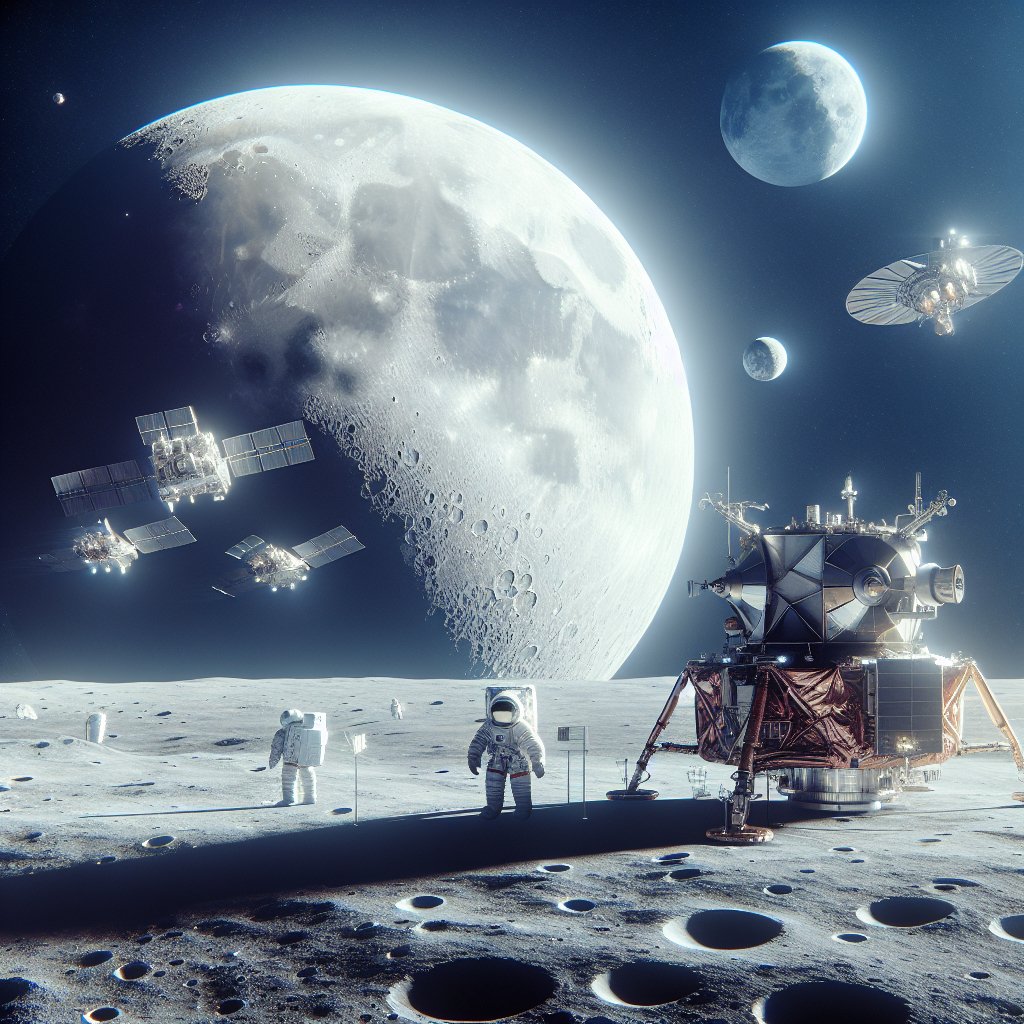The Moon has been a source of fascination and inspiration for humanity for centuries, serving as a symbol of mystery and a beacon for exploration. As our closest celestial neighbor, the Moon has been the target of numerous missions aimed at uncovering its secrets and understanding its role in the broader context of the solar system. This article delves into the history of lunar missions, the scientific discoveries they have yielded, and the future of human and robotic exploration of the Moon.
The History of Lunar Exploration
The journey to explore the Moon began long before the advent of modern space technology. Ancient civilizations observed the Moon and its phases, developing calendars and myths around its presence in the night sky. However, it wasn’t until the 20th century that humanity took its first steps toward physically reaching the Moon.
The Early Years: The Space Race
The mid-20th century marked the beginning of the space race, a period of intense competition between the United States and the Soviet Union. This rivalry was fueled by the desire to demonstrate technological superiority and achieve significant milestones in space exploration. The Soviet Union took an early lead with the launch of Luna 1 in 1959, the first spacecraft to reach the vicinity of the Moon. This was followed by Luna 2, which became the first human-made object to impact the lunar surface.
In response, the United States accelerated its efforts, culminating in the Apollo program. The Apollo missions were a series of manned and unmanned missions designed to land humans on the Moon and bring them safely back to Earth. The most famous of these missions, Apollo 11, achieved this goal on July 20, 1969, when astronauts Neil Armstrong and Edwin “Buzz” Aldrin became the first humans to set foot on the lunar surface.
Scientific Discoveries and Technological Advancements
The Apollo missions not only marked a significant achievement in human spaceflight but also provided a wealth of scientific data. Samples of lunar rock and soil were collected and brought back to Earth, allowing scientists to study the Moon’s composition and geological history. These samples revealed that the Moon is composed of similar materials to Earth, supporting the theory that it was formed from debris resulting from a massive collision between Earth and a Mars-sized body.
Technological advancements during this period were also significant. The development of the Saturn V rocket, the most powerful rocket ever built, was a key factor in the success of the Apollo missions. Additionally, the lunar module, a spacecraft designed specifically for landing on the Moon, demonstrated the feasibility of landing and taking off from a celestial body other than Earth.
The Modern Era of Lunar Exploration
Following the conclusion of the Apollo program, interest in lunar exploration waned for several decades. However, the turn of the 21st century saw a renewed interest in the Moon, driven by advancements in technology and a growing recognition of the Moon’s potential as a stepping stone for further space exploration.
Robotic Missions and International Collaboration
In recent years, a number of countries have launched robotic missions to the Moon, each contributing to our understanding of this celestial body. The European Space Agency’s SMART-1 mission, launched in 2003, used innovative ion propulsion technology to study the Moon’s surface and test new technologies for future missions.
China has also emerged as a major player in lunar exploration. The Chang’e program, named after the Chinese moon goddess, has achieved several significant milestones, including the first soft landing on the far side of the Moon with Chang’e 4 in 2019. These missions have provided valuable data on the Moon’s geology and potential resources, such as water ice, which could be crucial for future human exploration.
International collaboration has become a hallmark of modern lunar exploration. The Lunar Gateway, a planned space station in lunar orbit, is a collaborative effort involving NASA, the European Space Agency, and other international partners. This station will serve as a staging point for missions to the lunar surface and beyond, facilitating scientific research and technological development.
The Future of Human Exploration
The future of lunar exploration is poised to be even more ambitious, with plans for sustained human presence on the Moon. NASA’s Artemis program aims to return humans to the Moon by the mid-2020s, with the goal of establishing a sustainable human presence by the end of the decade. This program will build on the legacy of the Apollo missions, utilizing modern technology and international partnerships to achieve its objectives.
One of the key goals of the Artemis program is to explore the lunar south pole, a region believed to contain significant deposits of water ice. This resource could be used to support human life and as a source of fuel for missions to Mars and beyond. The development of lunar habitats and infrastructure will be crucial for enabling long-term human presence and scientific research on the Moon.
Private companies are also playing an increasingly important role in lunar exploration. Companies like SpaceX and Blue Origin are developing technologies to transport humans and cargo to the Moon, supporting both government and commercial missions. These efforts are expected to drive innovation and reduce the cost of lunar exploration, making it more accessible to a wider range of participants.
Conclusion
The Moon has captivated humanity for millennia, and our exploration of this celestial body has yielded significant scientific and technological advancements. From the early days of the space race to the modern era of international collaboration and private sector involvement, lunar missions have expanded our understanding of the Moon and its potential as a gateway to the solar system. As we look to the future, the Moon will continue to play a vital role in our quest to explore the cosmos, serving as a platform for scientific discovery and a stepping stone for human exploration of Mars and beyond.










